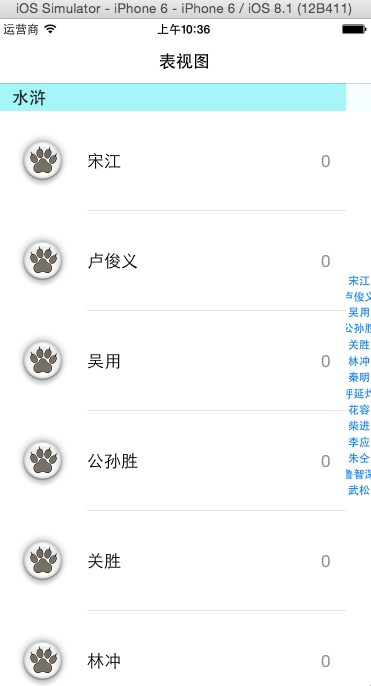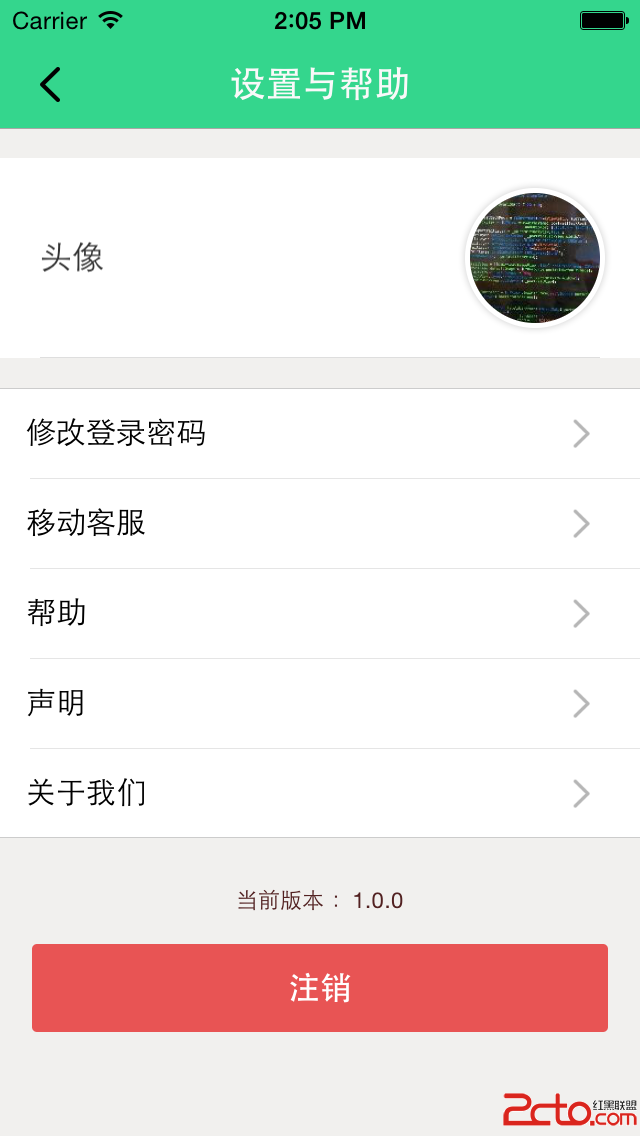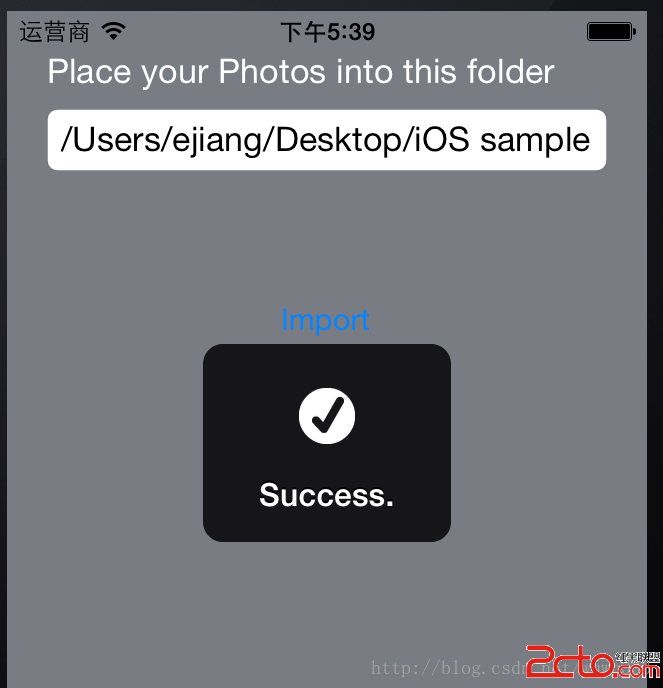iOS推送的那些事
直接切入主題,講講如何模擬推送以及處理推送消息。在進入主題之前,我先說幾個關鍵流程:
1、建Push SSL Certification(推送證書)
2、OS客戶端注冊Push功能並獲得DeviceToken
3、用Provider向APNS發送Push消息
4、OS客戶端接收處理由APNS發來的消息
推送流程圖:

Provider:就是為指定iOS設備應用程序提供Push的服務器。如果iOS設備的應用程序是客戶端的話,那麼Provider可以理解為服務端(推送消息的發起者)
APNs:Apple Push Notification Service(蘋果消息推送服務器)
Devices:iOS設備,用來接收APNs下發下來的消息
Client App:iOS設備上的應用程序,用來接收APNs下發的消息到指定的一個客戶端app(消息的最終響應者)
1、取Device token
App 必須要向 APNs 請求注冊以實現推送功能,在請求成功後,APNs 會返回一個設備的標識符即 DeviceToken 給 App,服務器在推送通知的時候需要指定推送通知目的設備的 DeviceToken。在 iOS 8 以及之後,注冊推送服務主要分為四個步驟:
- 使用 registerUserNotificationSettings:注冊應用程序想要支持的推送類型
- 通過調用 registerForRemoteNotifications方法向 APNs 注冊推送功能
- 請求成功時,系統會在應用程序委托方法中返回 DeviceToken,請求失敗時,也會在對應的委托方法中給出請求失敗的原因。
- 將 DeviceToken 上傳到服務器,服務器在推送時使用。
上述第一個步驟注冊的 API 是 iOS 8 新增的,因此在 iOS 7,前兩個步驟需更改為 iOS 7 中的 API。
DeviceToken 有可能會更改,因此需要在程序每次啟動時都去注冊並且上傳到你的服務器端。
- (BOOL)application:(UIApplication *)application
didFinishLaunchingWithOptions:(NSDictionary *)launchOptions
{
if ([application respondsToSelector:@selector(registerUserNotificationSettings:)]) {
NSLog(@"Requesting permission for push notifications..."); // iOS 8
UIUserNotificationSettings *settings = [UIUserNotificationSettings settingsForTypes:
UIUserNotificationTypeAlert | UIUserNotificationTypeBadge |
UIUserNotificationTypeSound categories:nil];
[UIApplication.sharedApplication registerUserNotificationSettings:settings];
} else {
NSLog(@"Registering device for push notifications..."); // iOS 7 and earlier
[UIApplication.sharedApplication registerForRemoteNotificationTypes:
UIRemoteNotificationTypeAlert | UIRemoteNotificationTypeBadge |
UIRemoteNotificationTypeSound];
}
return YES;
}
- (void)application:(UIApplication *)application
didRegisterUserNotificationSettings:(UIUserNotificationSettings *)settings
{
NSLog(@"Registering device for push notifications..."); // iOS 8
[application registerForRemoteNotifications];
}
- (void)application:(UIApplication *)application
didRegisterForRemoteNotificationsWithDeviceToken:(NSData *)token
{
NSLog(@"Registration successful, bundle identifier: %@, mode: %@, device token: %@",
[NSBundle.mainBundle bundleIdentifier], [self modeString], token);
}
- (void)application:(UIApplication *)application
didFailToRegisterForRemoteNotificationsWithError:(NSError *)error
{
NSLog(@"Failed to register: %@", error);
}
- (void)application:(UIApplication *)application handleActionWithIdentifier:(NSString *)identifier
forRemoteNotification:(NSDictionary *)notification completionHandler:(void(^)())completionHandler
{
NSLog(@"Received push notification: %@, identifier: %@", notification, identifier); // iOS 8
completionHandler();
}
- (void)application:(UIApplication *)application
didReceiveRemoteNotification:(NSDictionary *)notification
{
NSLog(@"Received push notification: %@", notification); // iOS 7 and earlier
}
- (NSString *)modeString
{
#if DEBUG
return @"Development (sandbox)";
#else
return @"Production";
#endif
}
2、處理推送消息
1)、程序未啟動,用戶接收到消息。需要在AppDelegate中的didFinishLaunchingWithOptions得到消息內容
- (BOOL)application:(UIApplication *)application didFinishLaunchingWithOptions:(NSDictionary *)launchOptions {
//...
NSDictionary *payload = [launchOptions objectForKey:UIApplicationLaunchOptionsRemoteNotificationKey];
if (payload) {
//...
}
//...
}
2)、程序在前台運行,接收到消息不會有消息提示(提示框或橫幅)。當程序運行在後台,接收到消息會有消息提示,點擊消息後進入程序,AppDelegate的didReceiveRemoteNotification函數會被調用,消息做為此函數的參數傳入
- (void)application:(UIApplication *)application didReceiveRemoteNotification:(NSDictionary *)payload {
NSLog(@"remote notification: %@",[payload description]);
NSString* alertStr = nil;
NSDictionary *apsInfo = [payload objectForKey:@"aps"];
NSObject *alert = [apsInfo objectForKey:@"alert"];
if ([alert isKindOfClass:[NSString class]])
{
alertStr = (NSString*)alert;
}
else if ([alert isKindOfClass:[NSDictionary class]])
{
NSDictionary* alertDict = (NSDictionary*)alert;
alertStr = [alertDict objectForKey:@"body"];
}
application.applicationIconBadgeNumber = [[apsInfo objectForKey:@"badge"] integerValue];
if ([application applicationState] == UIApplicationStateActive && alertStr != nil)
{
UIAlertView* alertView = [[UIAlertView alloc] initWithTitle:@"Pushed Message" message:alertStr delegate:nil cancelButtonTitle:@"OK" otherButtonTitles:nil];
[alertView show];
}
}
3、義通知提示音
你可以在 App 的 Bundle 中加入一段自定義提示音文件。然後當通知到達時可以指定播放這個文件。必須為以下幾種數據格式:
- Linear PCM
- MA4(IMA/ADPCM)
- μLaw
- aLaw
你可以將它們打包為aiff、wav或caf文件。自定義的聲音文件時間必須小於 30秒,如果超過了這個時間,將被系統聲音代替。
4、Payload
Payload 是通知的一部分,每一條推送通知都包含一個 Payload。它包含了系統提醒用戶通知到達的方式,還可以添加自定義的數據。即通知主要傳遞的數據為 Payload。
Payload 本身為 JSON 格式的字符串,它內部必須要包含一個鍵為 aps 的字典。aps 中可以包含以下字段中的一個或多個:
alert:其內容可以為字符串或者字典,如果是字符串,那麼將會在通知中顯示這條內容
badge:其值為數字,表示當通知到達設備時,應用的角標變為多少。如果沒有使用這個字段,那麼應用的角標將不會改變。設置為 0 時,會清除應用的角標。
sound:指定通知展現時伴隨的提醒音文件名。如果找不到指定的文件或者值為 default,那麼默認的系統音將會被使用。如果為空,那麼將沒有聲音。
content-available:此字段為 iOS 7 silent remote notification 使用。不使用此功能時無需包含此字段。
如果需要添加自定義的字段,就讓服務器的小伙伴們跟aps同一層級添加一個數組(以Json為例):
{
"aps" : {"alert" : "This is the alert text", "badge" : 1, "sound" :"default" },
"server" : {"serverId" : 1, "name" : "Server name"}
}
這樣收到的 Payload 裡面會多一個 server 的字段。
5、模擬推送
現在常用的後台server中,一般將推送證書以及推送證書的私鑰導出p12交給後台人員即可。
生成PHP需要的Pem證書
6、PHP有點調皮,還需要轉換成pem
准備:
1)、蘋果服務器證書端設置正確!打包證書、描述文件正確!!
2)、下載推送證書(cer格式),導入keyChain,保證私鑰存在,不存在去找創建這個證書的電腦要一份過來。
3)、從鑰匙庫導出的~~根證書~~(推送證書)私鑰(p12格式)
第三步根證書的私鑰這裡是一個坑!因為一個App的推送證書的創建可以和根證書創建的電腦不同,也就是keyChain產生的certSigningRequest不一樣,所以私鑰也是不一樣的,在這裡生成Pem時,注意要使用推送證書的私鑰!
操作過程:
A.把推送證書(.cer)轉換為.pem文件,執行命令:
openssl x509 -in 推送證書.cer -inform der -out 推送證書.pem
B.把推送證書導出的私鑰(.p12)文件轉化為.pem文件:
openssl pkcs12 -nocerts -out 推送證書私鑰.pem -in 推送證書私鑰.p12
C.對生成的這兩個pem文件再生成一個pem文件,來把證書和私鑰整合到一個文件裡:
cat 推送證書.pem 推送證書私鑰.pem >PHPPush.pem
然後把這個PHPPush.pem給後台基友們,就可以下班啦。
當然測試推送也比較麻煩,需要模擬真實的推送環境,一般需要後台提供幫助,但是遇到一些後台同事,他們有強烈地信仰著鄙視鏈的話,很鄙視iOS,心裡早就稱呼你“死前段”多年了,還那麼多事……
所以關於調試推送,這裡有兩種方式實現自推!不麻煩別人。
模擬推送:通過終端推送
<?php
// devicetoken
$deviceToken = '你的deviceToken';
// 私鑰密碼,生成pem的時候輸入的
$passphrase = '123456';
// 定制推送內容,有一點的格式要求,詳情Apple文檔
$message = array(
'body'=>'你收到一個新訂單'
);
$body['aps'] = array(
'alert' => $message,
'sound' => 'default',
'badge' => 100,
);
$body['type']=3;
$body['msg_type']=4;
$body['title']='新訂單提醒';
$body['msg']='你收到一個新消息';
$ctx = stream_context_create();
stream_context_set_option($ctx, 'ssl', 'local_cert', 'push.pem');//記得把生成的push.pem放在和這個php文件同一個目錄
stream_context_set_option($ctx, 'ssl', 'passphrase', $passphrase);
$fp = stream_socket_client(
//這裡需要特別注意,一個是開發推送的沙箱環境,一個是發布推送的正式環境,deviceToken是不通用的
'ssl://gateway.sandbox.push.apple.com:2195', $err,
//'ssl://gateway.push.apple.com:2195', $err,
$errstr, 60, STREAM_CLIENT_CONNECT|STREAM_CLIENT_PERSISTENT, $ctx);
if (!$fp)
exit("Failed to connect: $err $errstr" . PHP_EOL);
echo 'Connected to APNS' . PHP_EOL;
$payload = json_encode($body);
$msg = chr(0) . pack('n', 32) . pack('H*', $deviceToken) . pack('n', strlen($payload)) . $payload;
$result = fwrite($fp, $msg, strlen($msg));
if (!$result)
echo 'Message not delivered' . PHP_EOL;
else
echo 'Message successfully delivered' . PHP_EOL;
fclose($fp);
?>
將上面的代碼復制,保存成push.php
然後根據上面生成PHP需要的Pem證書的步驟生成push.pem
兩個文件放在同一目錄
執行下面的命令
superdanny@SuperDannydeMacBook-Pro$ php push.php
結果為
Connected to APNS Message successfully delivered
本文已被整理到了《iOS推送教程》,歡迎大家學習閱讀。
以上就是關於IOS推送的那些事,希望對大家的學習有所幫助。




